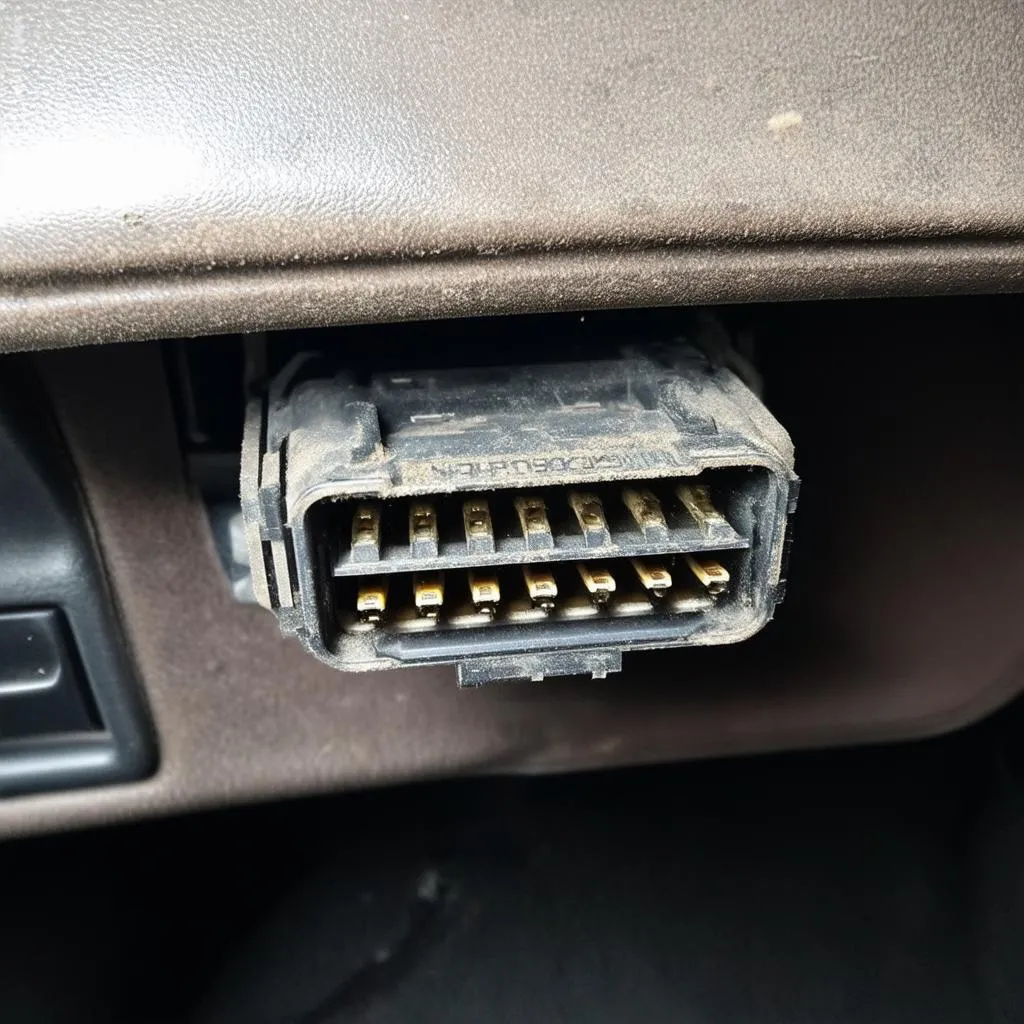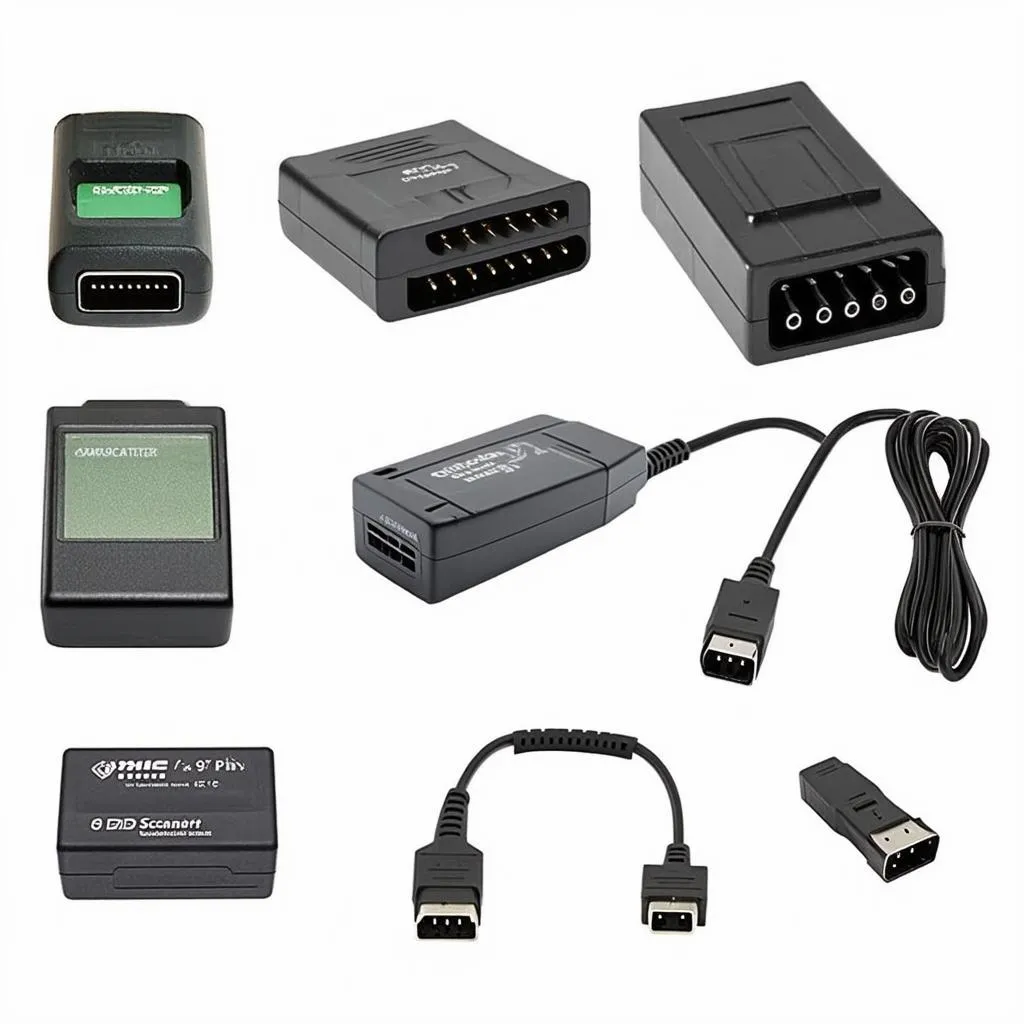“What’s that strange connector under my dashboard?” Ever found yourself pondering this question while tinkering with your older car? Well, chances are you stumbled upon the enigmatic 9-pin OBD connector, a relic from the early days of onboard diagnostics.
Before the standardization of the 16-pin OBD-II connector that we’re all familiar with today, car manufacturers often marched to the beat of their own drum, developing proprietary diagnostic systems. Among these, the 9-pin OBD connector carved its niche, particularly in European vehicles from the late 80s and early 90s.
Decoding the 9-Pin OBD Connector: A Blast from the Past
Imagine yourself back in the early 90s, a time when grunge music ruled the airwaves and car phones were the epitome of mobile technology. Back then, diagnosing car problems often felt like deciphering ancient hieroglyphics. This is where the 9-pin OBD connector enters the scene.
Unlike its standardized successor, the 9-pin OBD connector wasn’t bound by a universal protocol. Each car manufacturer, and in some cases even specific models, had their own unique pin configurations and communication protocols. This meant that mechanics often needed an arsenal of adapters and specialized scanners, each tailored to a particular make or model.
Navigating the Labyrinth: Common Questions About 9-Pin OBD Connectors
The world of 9-pin OBD connectors can feel like a maze, but fear not! Let’s shed some light on common questions that often arise:
What can I do with a 9-pin OBD connector?
While the 9-pin connector might seem archaic, it served as a gateway to basic diagnostic information. Depending on the vehicle, you could potentially access engine data, such as:
- RPM
- Coolant temperature
- Throttle position
- Ignition timing
Some manufacturers even allowed for rudimentary control functions, like adjusting idle speed or reading and clearing basic fault codes.
Can I use a standard OBD-II scanner with a 9-pin connector?
Unfortunately, no. The 9-pin connector predates the standardization of OBD-II, so a standard scanner won’t work. You’ll need a scanner or adapter specifically designed for your vehicle’s make and model.
Are 9-pin OBD connectors still used today?
In short, no. The automotive world has largely moved on to the standardized OBD-II connector. However, you’ll still find 9-pin connectors lurking under the dashboards of older vehicles, a testament to a bygone era of automotive technology.
Why the Shift from 9-Pin to OBD-II?
The transition to OBD-II was driven by a need for standardization and improved diagnostic capabilities. The automotive industry realized that having a universal system would simplify diagnostics, reduce costs, and empower car owners with more information about their vehicles.
Beyond the Technical: A Touch of Automotive Feng Shui
In the realm of automotive feng shui, the 9-pin OBD connector, with its nine pins, might be associated with the number 9, often symbolizing completion or fulfillment. While it’s a relic of the past, the 9-pin connector played a crucial role in the evolution of car diagnostics, paving the way for the sophisticated systems we rely on today.
Need a Hand with Your Automotive Diagnostics?
Whether you’re wrestling with a vintage car sporting a 9-pin connector or a modern marvel brimming with sensors, we’re here to help. Contact us on WhatsApp at +84767531508 for expert assistance with all your diagnostic tool needs. Our team of automotive gurus is available 24/7 to guide you through the intricate world of car diagnostics.
Don’t forget to check out these related articles for more insights:
Let’s keep those engines purring!
 Vintage car diagnostic port
Vintage car diagnostic port
 Car diagnostic tools for older vehicles
Car diagnostic tools for older vehicles